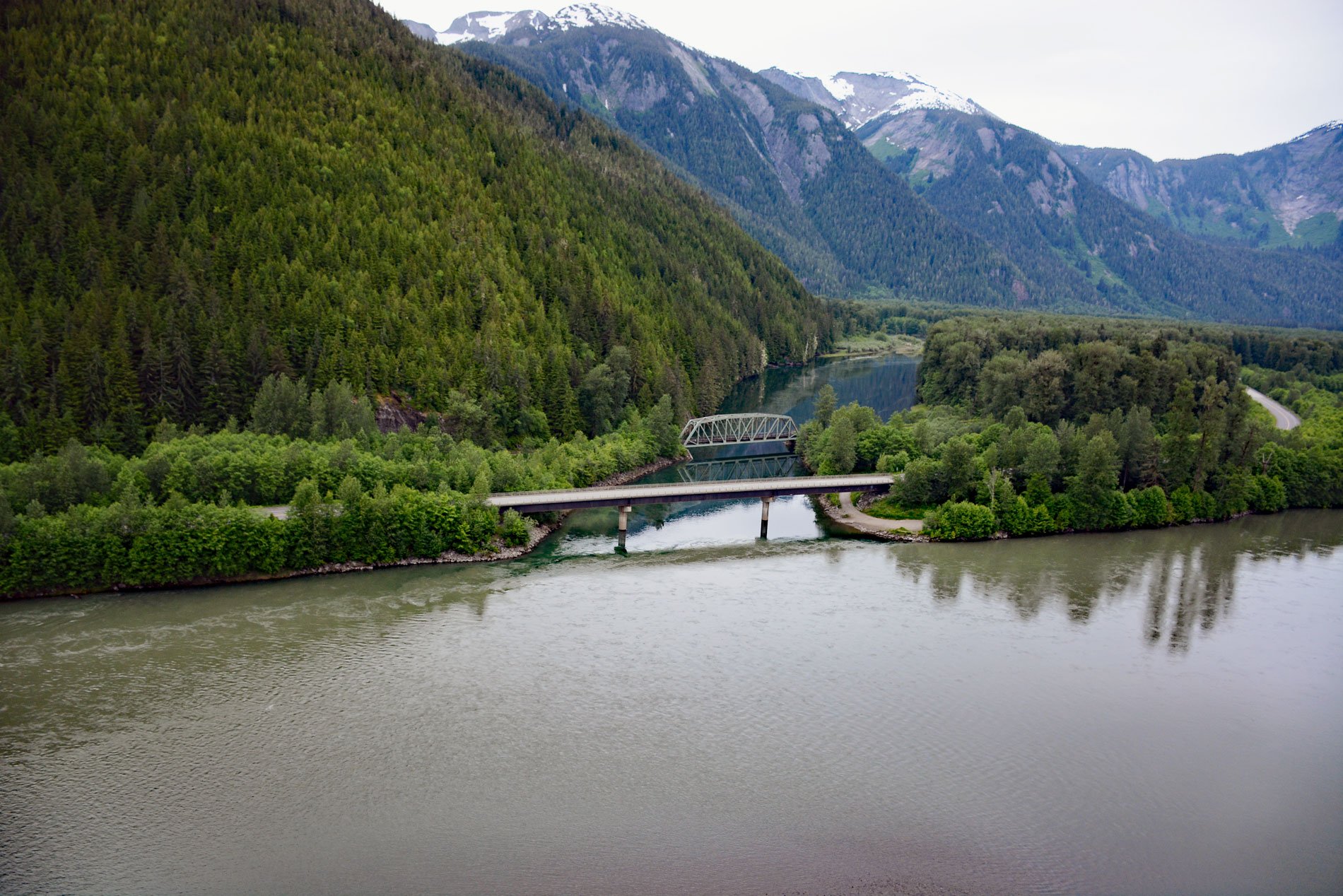Kasiks River is a tributary that enters the Skeena River about 55 miles (89 km) upstream from Chatham Sound, about 37 miles (60 km) east of Prince Rupert and 36 miles (58 km) southwest of Terrace, British Columbia. Skeena River flows for 350 miles (570 km), draining a watershed of 13,440,000 acres (5,438,975 ha) before it enters Chatham Sound. Major tributaries of the lower Skeena from the north are the Kasiks, Exchamsiks, and Exstew rivers, and the Gitnadoix River drains a watershed from the south. Tidal influence extends approximately 34 miles (55 km) upstream from Chatham Sound to the Kasiks River, and most Skeena mainstem Chinook salmon spawning habitat is located upstream to Terrace.
The Kasiks River is an important habitat for coho salmon as well as eulachon. Eulachon play an important role in the ecology of the Nass and Skeena rivers and are a cultural resource to the Tsimshian people of this region. The eulachon or oolichan is an anadromous fish the size of a herring. The eulachon spends most of its life in the ocean off the coast of British Columbia. Each spring in March or April they migrate in the millions to the lower reaches of coastal rivers to spawn in gravel beds. After spawning many, if not all, eulachon die and their carcasses decay enriching the stream and estuary, and through predation also the watershed. Eulachon are prey for gulls, eagles, seals, porpoises, sea lions, and whales.
Eulachon are very important to many of the First Nations on the Pacific Coast and a significant part of the cultural heritage for some communities. The eulachon is described as a mainstay of the Nisga’a culture and a historic staple of Nisga’a trade. By returning to spawn in the early spring, when winter food supplies were exhausted, the eulachon literally saved lives, leading to the name ‘salvation fish’. Eulachon are also known as candlefish because they are almost 20% oil by weight and when dried they retain enough oil to burn like a candle. The fish are caught from March to April, allowed to ripen in large boxes, and then rendered. The resulting oil or grease is used as a condiment, in bread and stews, and as a preservative for dried berries. The oil is unique among fish oils in that it is a solid at normal temperatures with the consistency of soft butter. Read more here and here. Explore more of Kasiks River and Skeena River here:

